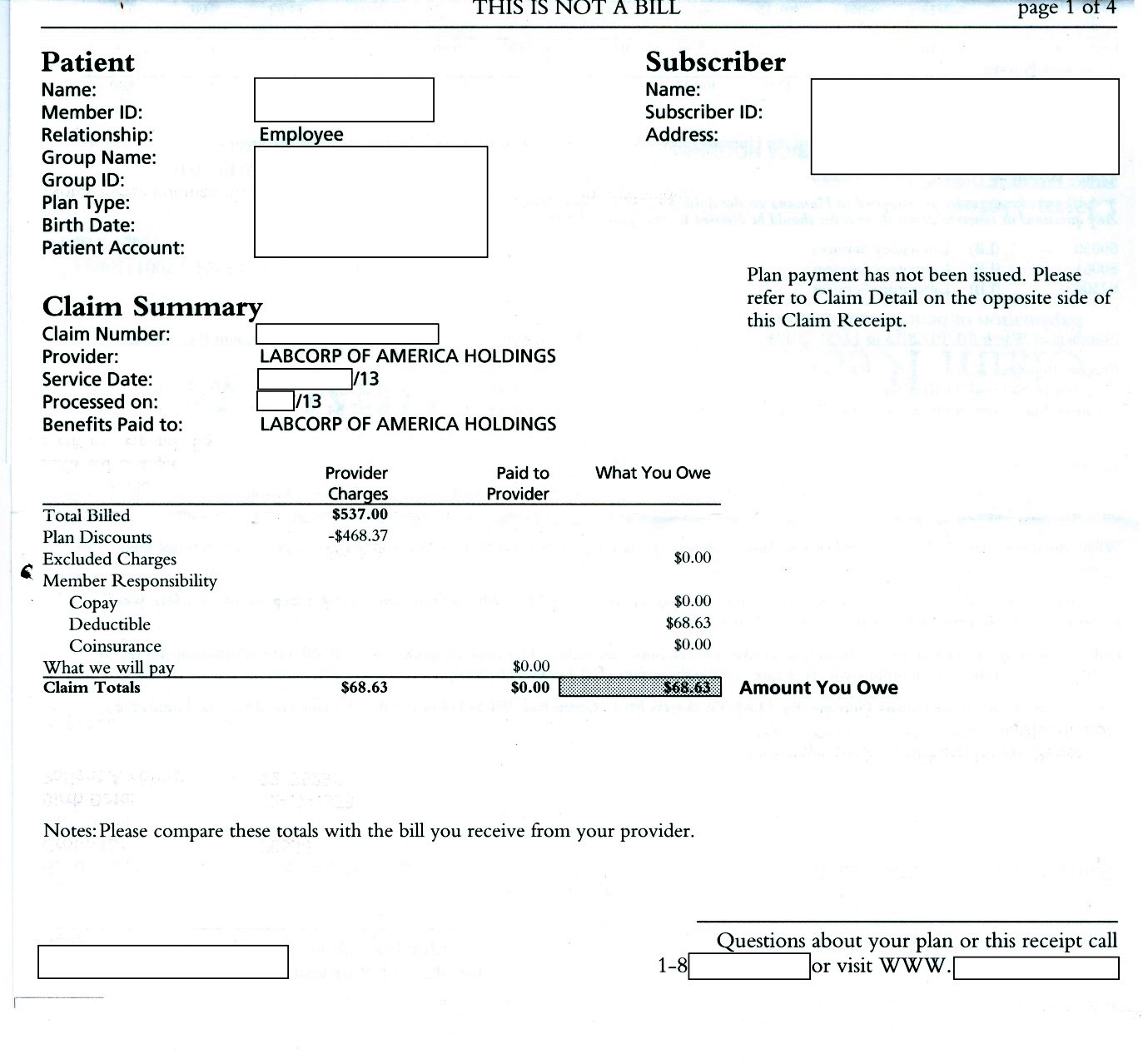The patient needed a standard set of blood tests at LabCorp. The busy receptionist obligingly spent time querying her software to figure out the cash price for the tests. She came up with a quote of $537.00. Given the quote, the patient decided to go with his insurer’s network price.
Wise move.
As the statement of benefits shows, the network price was $68.63, a $468.37 saving over the cash price of $537.00.
This experience provides food for thought in several dimensions:
The patient needed a standard set of blood tests at LabCorp. The busy receptionist obligingly spent time querying her software to figure out the cash price for the tests. She came up with a quote of $537.00. Given the quote, the patient decided to go with his insurer’s network price.
Wise move.
As the statement of benefits shows, the network price was $68.63, a $468.37 saving over the cash price of $537.00.
This experience provides food for thought in several dimensions:
- With respect to claims by legislators that requiring providers to post their prices will help reduce medical costs, which price do you think LabCorp will post? Will this be an improvement that justifies the regulatory burden?
- Based on a variety of anecdotes (and if one has enough anecdotes they become data), smaller medical entities like individual physician practices and stand-alone therapeutic facilities are almost always willing to offer a cash discount. So are hospitals, when approached by firms in the business of arranging cash discounts. ObamaCare rules are designed to replace small health care businesses with large networks run by hospitals or insurers. What will this do to people’s ability to negotiate lower prices using cash payment?
- Medicaid managed care, which emphasizes contracts with big networks, has long been promoted as a cost reducing alternative to Medicaid fee-for-service, which pays individual physicians for their services. Accumulating evidence suggests that, contrary to expectations, Medicaid managed care ends up costing more than fee-for-service. What role does organizational size have in resisting pricing pressures?
